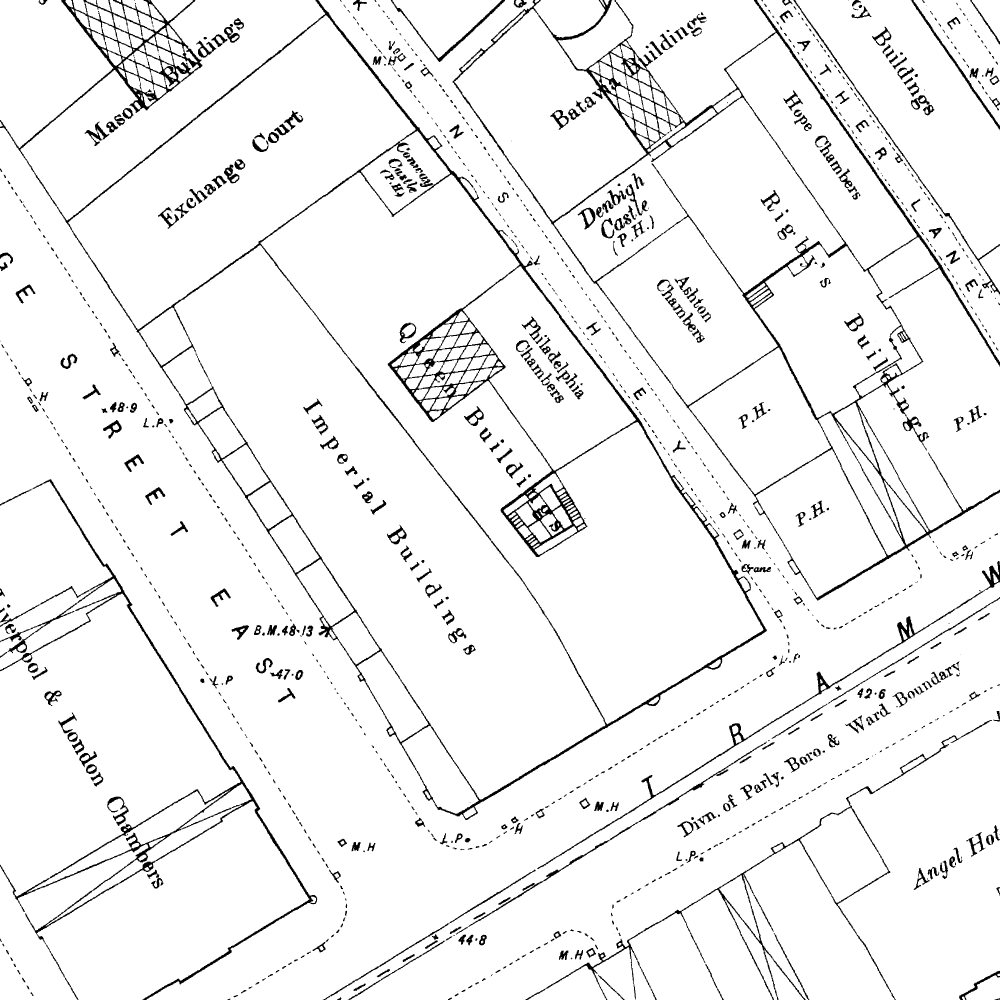In the Victorian period Liverpool was Britain’s second greatest port. So there are hundreds of remnants of Liverpool’s trading golden age dotted around the landscape. We’re all familiar with the scores of warehouses, docks and the odd road bridge seen around town. But there are also tiny details which have survived and which give clues to the city’s history. This crane, known as a teagle, is one such detail.
A teagle is a type of crane which was used to lower goods directly into the basement of warehouses. One such crane adorns the side of 11 Dale Street in Hackins Hey. It’s in its original location, and presents several clues as to the nature of the building before it became a shared business space.
The crane and the trapdoor
This type of crane is known as a teagle. The teagle was invented in 1835 by the company Frost and Stutt. It was driven by belts (as opposed to the inefficient steam-driven lifts in use at the time). In the Dale Street case the machinery may have been in the basement of the building. This was under the crane, in the same place that merchandise was stored.
There is an old (now semi-blocked) trapdoor leading into the basement, as you can see in the photo. It’s no coincidence that this is next to the crane. Goods would have been brought here from the ships it came in on. Next, workmen hoisted those goods down into the basement. It was stored here until it moved to its next destination, such as the markets of Liverpool and Lancashire.
So this little arrangement of crane and trapdoor shows that the building’s basement was once used as a warehouse. Yet it may have been that the ground floor and first floor were offices. These offices may have belonged to the company which was storing the goods, but as often as not it made sense for an office owner to lease out the space to one (or more) other companies.
Dale Street warehouses
Liverpool’s Victorian land values on Dale Street were, as now, extremely high. Renting out your basement to a company who could make use of it was an efficient use of real estate. It also helped a company pay the rates bills, or have a warehouse near the river without shelling out on an entire building. Sometimes an unlit cellar would do.
The iron crane shows a beautiful attention to detail, with a moulded point in the shape of a pineapple at the top. Perhaps this makes reference to Liverpool’s many exotic trade destinations, or the warehouse contents. Foliage-like designs on the two wheels complete the crane. It’s sturdily attached to the building itself by a heavy circle of metal and stout bolts. Despite this the crane arm itself is rather light and elegant.
11 Dale Street, Liverpool
We can see on the 1891 map of the area that the premises were known as Queen Buildings. The detailed 1:500 map marks the crane itself, as well as the trapdoor into the basement. It also shows the inebriating number of public houses (P.H.) in the area, but we won’t dwell on that right now!
And no doubt there are plenty of other cranes pock-marked about the city centre, from Kirkdale to Toxteth. After all, warehouses were spread right across that area. Let me know if you spot any more!
Image: The image of the crane is my own, and can be seen in my book, Liverpool: a landscape history, available signed from this site and (unsigned) from all good bookshops.

